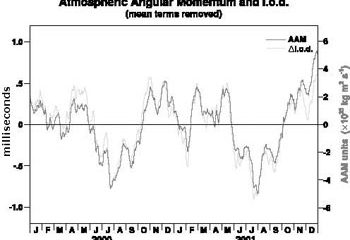Earth Sciences (also referred to as Geosciences), which deals with basic issues surrounding our planet, plays a vital role in the area of energy and raw materials supply.
Earth Sciences comprises subjects such as geology, geography, geological informatics, paleontology, mineralogy, petrography, crystallography, geophysics, geodesy, glaciology, cartography, photogrammetry, meteorology and seismology, early-warning systems, earthquake research and polar research.

Scientists from the University of Colorado at Boulder have proposed a long-sought answer to how atmospheric sulfate aerosols are formed in the stratosphere.
Conducted by researchers at the Cooperative Institute for Research in Environmental Sciences, or CIRES, the research shows how a fundamental molecular process driven by sunlight may play a significant role in determining the planet’s energy budget.
The research was a collaboration between Veronica Vaida, chair of the CU-B

Because of Earth’s dynamic climate, winds and atmospheric pressure systems experience constant change. These fluctuations may affect how our planet rotates on its axis, according to NASA-funded research that used wind and satellite data.
NASA’s Earth Science Enterprise (ESE) mission is to understand the Earth system and its response to natural and human-induced changes for better prediction of climate, weather and natural hazards, such as atmospheric changes or El Nino events that

Breakthrough could help resolve serious problems in oceanography and climate research
Scientists at Johns Hopkins University and the University of California-Irvine have finally been able to field-test theories about how wind transfers energy to ocean waves, a topic of debate since the 19th century that had previously proved impossible to settle experimentally.
The new results may help lead the way to the resolution of a longstanding problem in scientists’ understanding

The relatively powerful earthquake that hit eastern France last Saturday confirms the findings of the postgraduate research currently being conducted by Gideon Lopes Cardozo at the Université Louis Pasteur in Strasbourg and the Faculty of Earth and Life Sciences at the VU Amsterdam. Lopes Cardozo is investigating the causes of earthquakes in the southern part of the Rhine Graben. His research is sponsored by the European Union and has shown that the movements in the earth’s crust in the area around t

Warming land and ocean surfaces, melting glaciers, rising sea levels, and other recent evidence strongly suggest that Earth’s climate is already changing rapidly because of the buildup of greenhouse gases in the atmosphere, according to Warren Washington, senior scientist and head of the Climate Change Research Group at the National Center for Atmospheric Research (NCAR). Computer models of Earth’s climate support these observations, he says, and indicate more severe changes yet to come.

Powerful computer models predict that winter temperatures in the polar regions of the world could rise as much as 10 degrees centigrade in the next hundred years, if no efforts are made to control production of carbon dioxide, methane and other gasses.
“With projections to the year 2100, we can show what will happen if we continue with business as usual—if we don’t do anything to curb emissions of greenhouse gasses,” said Warren M. Washington, senior research scientist for the National Cent